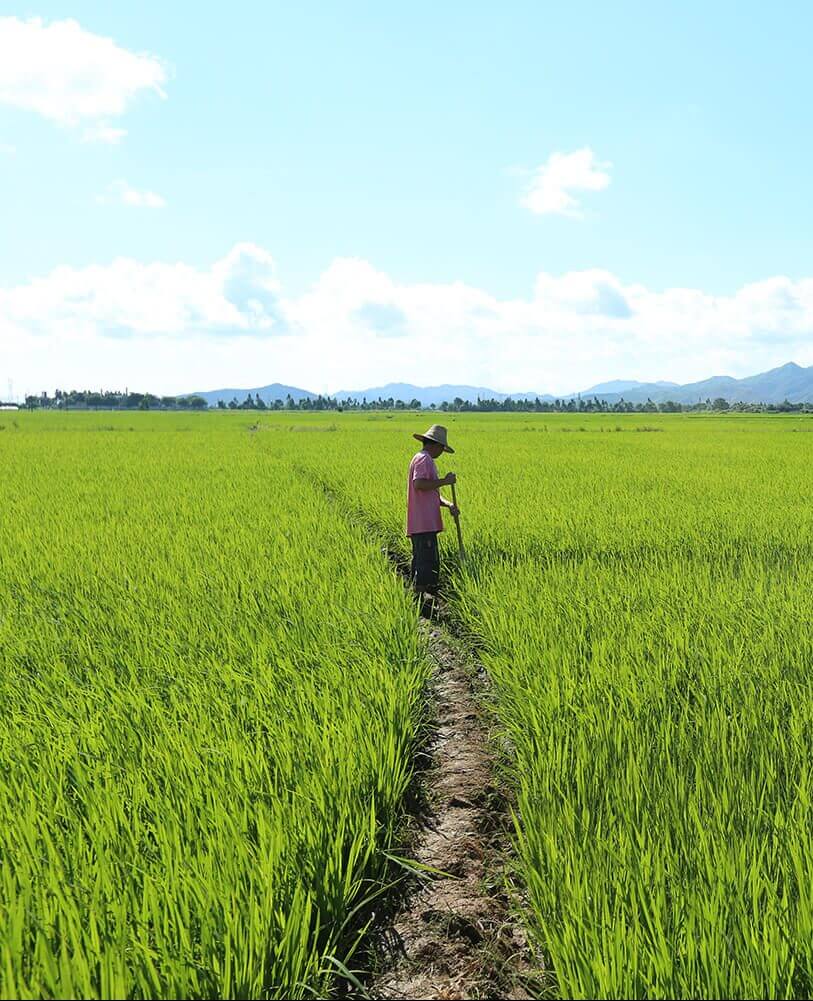Controlled Release Fertilizers
Revolutionizing Fertilizers with Controlled Release Fertilizers
CRF is considered the fertilizer technology with the highest nutrient use efficiency.

Over 50 years ago, ICL’s Osmocote Controlled Release Fertilizers (CRF) method changed the industry: an NPK granule with an organic resin coating around it, ensuring that one application of nutrients would be enough for a long period of time. It marked the start of a whole new principle of fertilizer application.
Today, Controlled Release Fertilizers (CRF) are used all over the world in agriculture, horticulture, and professional turf surfaces.
CRF is considered the fertilizer technology with the highest nutrient use efficiency. Conventional fertilizers dissolve in the soil immediately after application, only providing nutrition for a short period of time. Multiple fertilizer applications are necessary to ensure that the crop gets the nutrition it needs.
Thanks to their special coatings, CRF granules release their nutrients gradually over an extended time. Depending on a CRF product’s longevity, nutrient release takes several weeks up to many months.
One single application of CRFs is enough to feed a crop for a full growing season.


Thanks to the highest nutrient use efficiency and precise, localized application (in the plant root zone), a much lower NPK input with CRFs is enough to reach the same or higher quality crops. Nearly 30 years of ICL trials have proven these strengths of the Controlled Release Fertilizer concept. Depending on circumstances in cultivation, CRFs can significantly reduce:
- Total Fertilizer Use: by a rate of 20% to 50%.
- Leaching: by rates at up to 55%.
- Denitrification: by up to 40%.
- Volatilization: by rates up to 40%.
For more technical information and trials, please visit the ICL Specialty Fertilizers Knowledge Portal and/or this publication.






Growers worldwide can reduce fertilizer usage and simultaneously achieve higher quality crops and yields with a lower environmental impact.
Controlled Release Fertilizers are applied in the soil around a plant’s root zone, exactly where nutrients are most effective. CRF’s nutrient release closely matches the plant’s demand, so that the nutrients are available for the plant precisely when it needs them. This prevents nutrient excesses and minimizes losses to the environment through the leaching of nutrients into water sources and volatilization.












When using Controlled Release Fertilizers additional processes benefit as well, such as increasing the nitrogen use efficiency of plants. This increased efficiency means less nitrogen is volatilized to the air as N2O, a greenhouse gas.






CRF technology has been further developed over the past decades and in recent years, ICL introduced innovative coating technologies, such as Osmocote-Exact’s “Double Coating Technology” and “E-Max Release Technology”.
Improving Rice Nitrogen Use Efficiency by Using Controlled Release Fertilizers
Rice is a major staple crop and it is largely produced by small farms, making it a central point for family economies. It is the most important food item for calorie intake. For these reasons, increasing the production of this grain is of huge importance.
Modern sustainable agriculture demands an increase in Nitrogen Use Efficiency (NUE), so it is urgent to find solutions which address these issues, while increasing farmer’s yield and income.
Controlled Release (coated) Fertilizers offer a predictable and consistent release of nutrients in a specific time period. Since the amount of nitrogen released daily is small and in line with plant uptake requirements, this type of fertilizers could be an ideal tool to reduce nutrient losses and optimize the NUE.
The results of a study done on rice, showed that across all trials, using CRF instead of the conventional fertilization practice significantly increased (p<0.01) both yield and NUE by 12% and 29% respectively.
The future of CRF
Current Controlled Release coatings are polymers based on enhanced vegetable oils. This kind of coating degrades slowly and is thus effectively inert in the soil after the nutrients have been released. All ICL polymer coatings are designed to be as thin as possible (as thin as a human hair) and permeable, while still allowing the coating to fulfill its function: to control the release of nutrients over a predefined time period.
To take CRF technology into the future, ICL is focusing on the development of a faster biodegradable coating
Biodegradable coating will comply with the requirements set in new regulations of the European Union and reduce concerns raised by stakeholders about the welfare of our planet.
Visit the website or LinkedIn to learn more about our Controlled Release Fertilizers.
A Life Cycle Assessment (LCA) of Controlled Release Fertilizers
ICL assessed the impact of its products on the environment with a method to quantify the environmental impact through its whole lifecycle. An LCA was done on Agrocote (one of the products in the CRF family) with regards to potato cultivation in the Netherlands.
Using Agrocote on every 10.000 ha of cultivated land reduces CO2 footprint equal to:
- Planting 387.664 trees
- The emissions of 1108 European citizens in a year
It was found that Agrocote has better environmental performance (vs conventional fertilizers) in terms of climate change (~10% reduction), acidification (max. of 20% reduction) and eutrophication (max. of 40% reduction).


